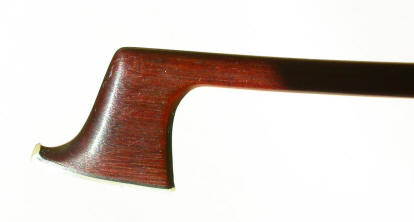 Tips on selecting a new bow
Tips on selecting a new bow
Finding the perfect violin, viola, or cello bow may seem daunting, but these tips will help aid you in your endeavor.
In selecting a new bow, we suggest you consider the following to help your decision: flexibility, balance, wood vs. carbon fiber, investment value, tone, and response.
Bow Qualities
Flexibility
The degree of bow stiffness can range from very stiff to very flexible. Most orchestral players prefer stiffer bows, while most soloists prefer bows with greater amounts of flexibility. This also explains why many players own more than one bow. The strength of your bow can also influence your decision as much, if not more, than the actual weight. While beginners may feel more comfortable with a heavier bow, as it assures the bow will travel on the string without bouncing, the more advanced player may appreciate a bow with more flexibility for performing a wide range of strokes.
Balance
Balance points on bows determine where your bow will best perform strokes such as sautillé and spiccato. Players and teachers have differing opinions on this subject – this is where players discuss a bow being frog heavy or tip heavy.
Wood vs Carbon Fiber
Pernambuco is the material used since the late 18th century for all fine bows. Lesser and different woods have also been used over the last couple of centuries, but not with the same result. Brazilwood is a type of wood still used on basic student bows. It does not have the characteristics needed to be a long lasting bow for today’s performers.
Carbon fiber bows can offer a good alternative for those who play in alternative situations, such as outdoors or in pits, and for those who might not feel totally comfortable with a wood bow. Since carbon fiber has the characteristics needed in today’s bows, its use has encouraged the efforts to save and replenish rare tropical woods, such as Pernambuco.
Investment Value
Handmade bows are the best choice for the advanced player. There are many fine modern makers, but if available, antique bows are often the choice of the finest players and those looking for an investment. These bows come from France, England, and Germany. French bows are the most universally admired. Bows from different countries can have different qualities, such as silkiness in English bows or faster articulation in French bows. The most important aspect of any great old bow is that it allows the player to add greater differences in quality of sound and nuance that cannot be obtained from an average quality modern bow.
The choice of mountings used by makers (gold, silver, and nickel-silver) was a grading factor used by makers to show which they considered their best efforts. For the frogs, tortoiseshell, ivory, bone, and ebony figured in the same way. If one is choosing to purchase an antique bow, a recent certificate from an established bow expert should accompany the bow. Expertise has changed drastically in the last 50 years, and a recent opinion is essential for any French bow.
Tips to remember
For the Intermediate Player
You can learn to play any instrument, but in selecting a bow, you must have a great degree of comfort immediately. Make sure the bow sits well on the string when drawing whole bows. Don’t just test pieces you know, but try passages that are uncomfortable for you. Test the bow with the hair both on its side and flat. Different pieces require different playing techniques. If you are comfortable playing after all these tests, then the bow is for you.
For the More Advanced Player
The purchase of a fine bow should allow you to lighten up the pressure with the right hand, giving you more freedom to the left. After purchasing a fine bow, expect it to be a year or more before you realize all the qualities of a great bow. The better the bow, the more likely it is that it will teach you how to play.
If you are in the search for a new bow, we would be glad to assist in your search. We carry both beginner bows and fine French, English, and German bows. Call us at 1-800-317-9452 to speak with someone in our sales team.

